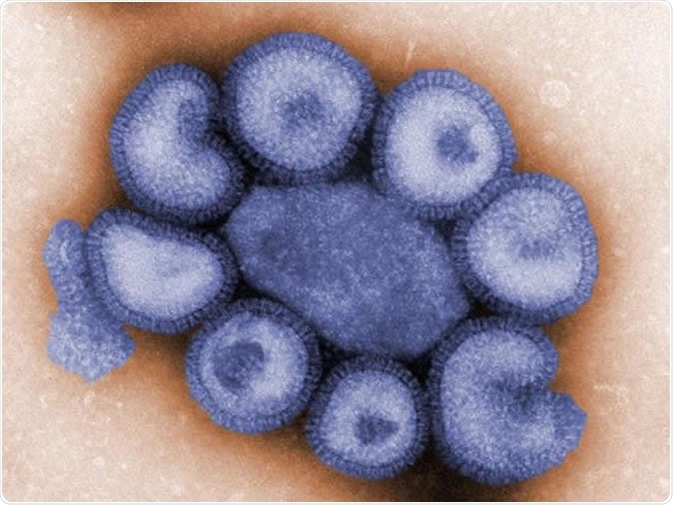H1N2 is a subtype of the influenza A virus, which is also referred to as bird flu.
H1N2 currently poses a tremendous public health concern because it has spread to both human and pig populations. Influenza is a highly contagious respiratory infection that causes severe illness, particularly in people who are either very young or very old and people who already have an existing health condition.

Among humans, only three subtypes of influenza A virus are known to exist and these include H1N1, H1N2, and H3N2. The influenza virus is capable of mutating and forming different strains, although the symptoms caused by new strains are the same as those seen with the original virus. Therefore, the symptoms caused by H1N2 are no more severe than those caused by other strains of the virus and H1N2 has not been associated with any particular increase in influenza activity. However, frequent mutation of the influenza virus does mean that regular vaccinations are sometimes required to protect people against any newly emerging strains.
The H1N2 strain was identified between December 1988 and March 1989 in six cities across China. Nineteen H1N2 isolates were identified during this time, but no further spread occurred. During the 2001 to 2002 flu season in the northern hemisphere, H1N2 was identified in the United States, Canada, France, Romania, Ireland, Latvia, Oman, India, Malaysia, and Singapore. The earliest reported outbreak occurred in India on May 31st, 2001.
On February 6th, 2002, the first cases of H1N2 were reported in the UK, Egypt and Israel by the World Health Organization and by the Public Health Laboratory Service in the UK.
Another strain called the 2001–2002 Influenza H1N2 Wisconsin seems to have evolved through mutation of the H1N1 and H3N2 subtypes already circulating. The virus has a similar hemagglutinin protein and neuraminidase protein to those found on the current H1N1 virus and H3N2 viruses, respectively. This means the flu vaccine should protect against this influenza virus as well as the current H1N1, H3N2 and influenza B viruses.
Symptoms
Some examples of the various signs and symptoms of disease associated with H1N2 infection are listed below:
- Sore throat
- Muscle ache
- Headache
- Runny nose
- Fever
- Cough
- General malaise
- Watering eyes
- Nasal blockage
- Joint pain
- Fatigue
- Chills
- Red throat, nose and eyes
- Appetite loss
Complications
Some examples of the complications that can arise as a result of H1N2 infection include the following:
- Children are at risk of febrile seizure, a form of epileptic seizure associated with fever
- Symptoms of any pre-existing asthma or chronic obstructive pulmonary disease may be exacerbated
- Any pre-existing heart failure may also be exacerbated
- Pneumonia may develop
- H1N2 infection can have negative effects on the developing fetus in the womb
- In severe cases, the infection can cause death
Treatment
People with H1N2 influenza are advised to get as much bed rest as possible and stay well hydrated by drinking plenty of fluids. Antiviral medications may be prescribed to help decrease the severity of symptoms such as nasal congestion, pain and fever. Examples of antiviral agents include Relenza and Tamiflu.
Pain relief medications (analgesics) such as paracetamol, aspirin, codeine and non-steroidal anti-inflammatory drugs may also be prescribed. Regular attendance to any flu jab appointments will prevent further influenza infections.
Sources
- http://www.nhs.uk/Conditions/Avian-flu/Pages/Introduction.aspx
- www.clintoncountypa.com/Pandemic%20Information/AvianFluFacts.pdf
- http://wwwnc.cdc.gov/eid/article/20/1/12-1848_article.htm
- www.rightdiagnosis.com/t/type_a_influenza_subtype_h1n2/intro.htm
Further Reading
- All H1N2 Content
Last Updated: Jan 30, 2020

Written by
Sally Robertson
Sally has a Bachelor's Degree in Biomedical Sciences (B.Sc.). She is a specialist in reviewing and summarising the latest findings across all areas of medicine covered in major, high-impact, world-leading international medical journals, international press conferences and bulletins from governmental agencies and regulatory bodies. At News-Medical, Sally generates daily news features, life science articles and interview coverage.
Source: Read Full Article
